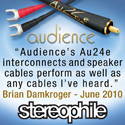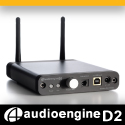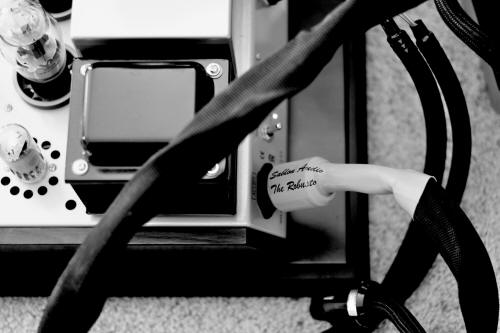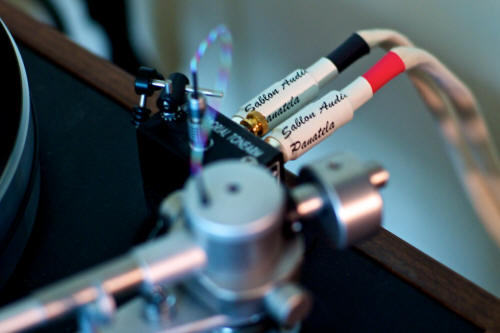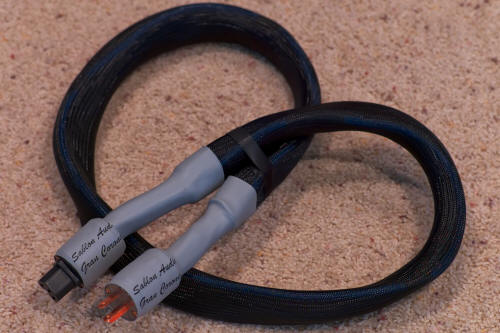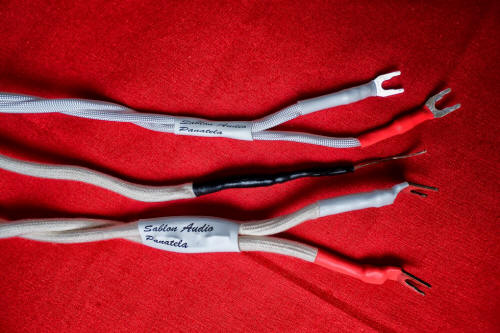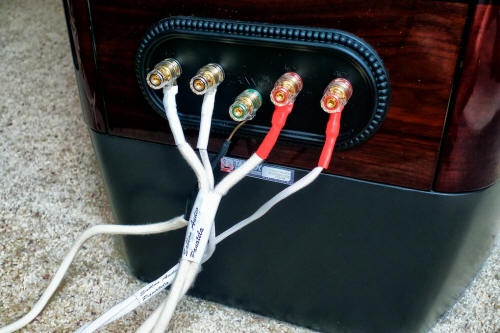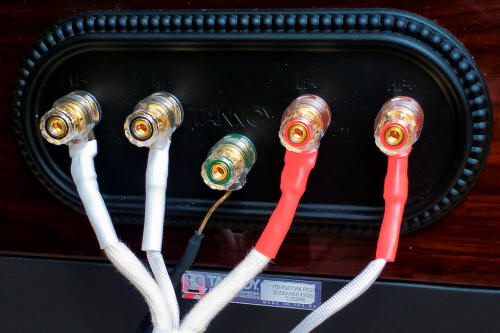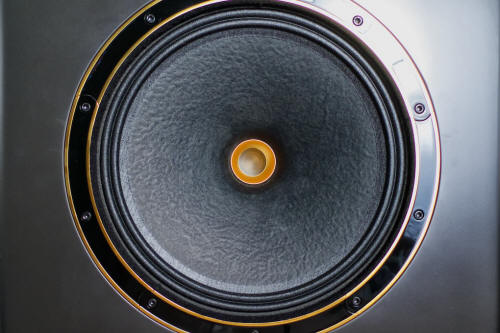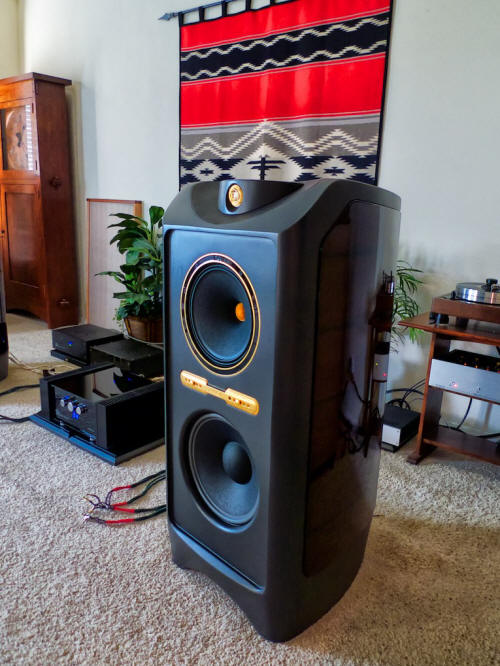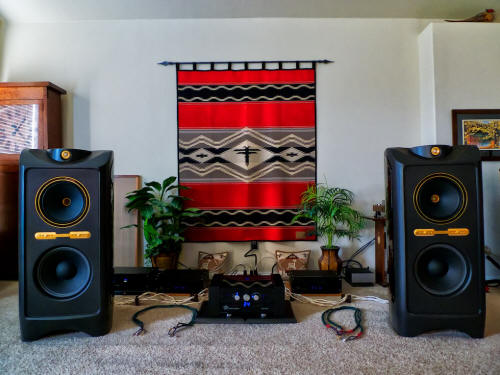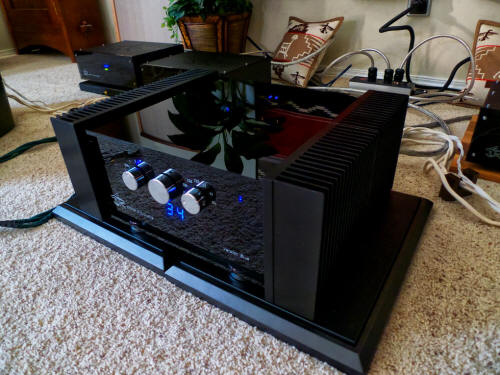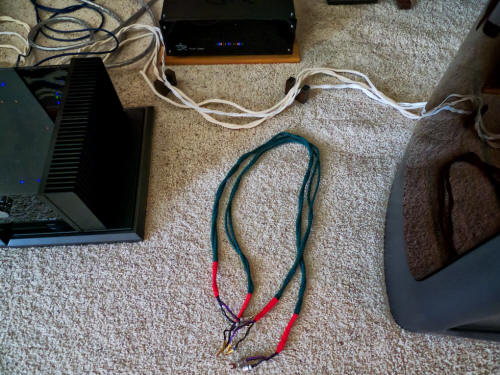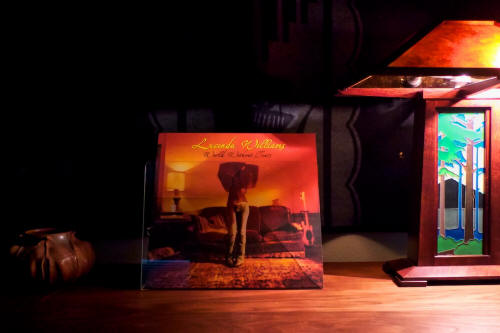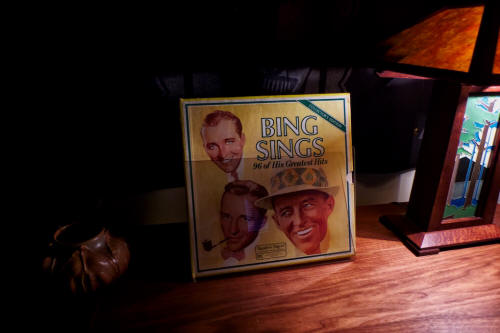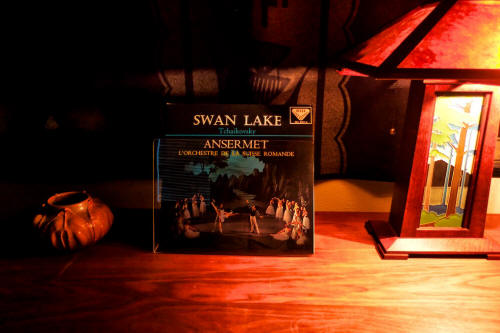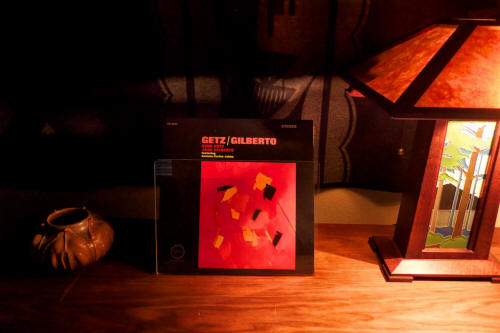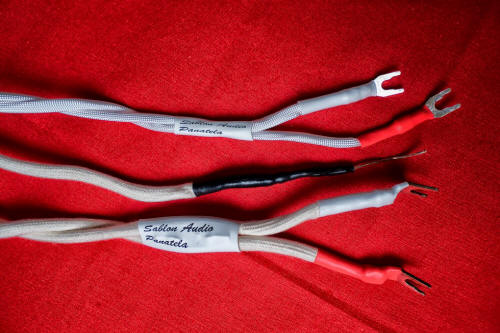|
|
You are reading the older HTML site
Positive Feedback ISSUE 63
sablon audio Panatela Special Edition Component Speaker Cables as reviewed by Jeff Day
Mark Coles has been quietly designing and handcrafting ultra-performance AC power cords, interconnects, and now speaker cables, out of his London, England, based Sablon Audio since 2010. In Positive Feedback Issue 52 I told you about Mark's Robusto high-performance AC power cords. The Robusto power cord has weathered time well as a long-term reference in my primary review system. The Robusto's rich and full-bodied presentation makes it a favorite of mine, and one of the first power cords I reach for if I need to dial in a more natural musical balance during the review process.
In Positive Feedback Issue 56 I told you about the Mark's Panatela interconnect. The Panatela interconnect is a purist design that uses silver conductors insulated with a natural fiber dielectric, no shielding is used, and the design has extremely low capacitance at 5.7pF per foot. The Panatela is terminated with Xhadow RCA connectors that allow connection of the silver conductors to the contacts with a setscrew, avoiding the signal degradation inherent to solder joints. The Panatela easily became my favorite interconnects, with a masterful combination of incredible sonic prowess along with superb musicality that makes it my long-term reference to this day. In the review I reported, "Every once in a while you listen to a piece of Hi-Fi gear and it completely resets what you think is possible for a genre of gear, and this is what happened with the Panatela interconnect."
In Positive Feedback Issue 60 I told you about Mark's new statement power cord, the Gran Corona. Mark's intention with the Gran Corona power cord was that it be more neutral and transparent than the warm, dark, and rich, Robusto, while still maintaining the musicality the Robusto was known for. To achieve that result Mark utilized every performance-enhancing method at his disposal: a low capacitance design derived from his Panatela interconnect geometry, conductors chosen by ear for the best sound, blends of noise-reducing crystals incorporated into the IEC and AC plug bodies, the use of UNIKO Anti-Vibration Magic paint applied in key locations to dampen parts prone to resonance, cryogenic treatment, all of which lowered the noise floor and/or improved conductivity. To put the finishing touch on each Gran Corona before it leaves for your home, Mark fully conditions it on an Audiodharma Cable Cooker so you don't have to.
The Panatela Special Edition Component Speaker Cables Mark launched his new Sablon Audio Panatela speaker cables in Spring 2012. Mark has voiced the Panatela speaker cable to be the sonic & musical equivalent of the Panatela interconnects, and as with the Panatela interconnects his goal was to re-write the book on the level of performance you can expect from a set of speaker cables.
Mark custom makes every set of Panatela cables, and builds them up from the bare wire using a variety of different conductors using varying the types of metal, gauge, topology, cryogenic treatment, and dielectric to optimize their performance. Mark is very meticulous in the design of his cables, and doesn't use solder joints because he feels they degrade the sound. Mark uses cryogenically treated silver-plated copper Xhadow spades for terminations, which he considers to be the best sounding terminations available. Mark also meticulously prepares the Panatela speaker cables with various cryogenic treatments, anti-oxidants, contact paste, and the like, to maximize their performance. To top all that off Mark pre-conditions the Panatela cables with an Audiodharma Cable Cooker before he ships them to you. The price for an 8-foot pair of full range Panatela speaker cables is $1750 USD. In addition to offering the full range Panatela speaker cables, for loudspeakers with multiple sets of binding posts, Mark also offers (on special order) to build you a component set of Panatela speaker cables where the high-frequency cables are optimized for the high-frequency drivers of your particular loudspeakers. Mark's approach is not to be confused with bi-wiring using two identical sets of speaker cables, but rather it is a component approach where the full-range Panatela cables are paired in a bi-wire arrangement with a pair of Panatela speaker cables that are optimized for a particular loudspeaker's crossover frequency and type of driver. Through Mark's component cable approach I've learned that the high-frequency section and the low-frequency section of the Tannoy Dual Concentric™ drivers are different enough technologies to warrant an optimized cable for each one, and it makes a very significant difference. Bi-wiring with identical Panatela full-range speaker cables doesn't produce results even close to being as good as using an optimized component set of Panatela bi-wire cables, as I can attest to, as Mark sent me two pairs of identical full-range Panatelas speaker cables to try. From personal experience I can say that Mark's Panatela component approach to low & high-frequency speaker cables performed vastly better on the Tannoys than two identical full-range pairs of Panatelas did. To develop the Panatela Component speaker cable set that were optimized for Tannoy Dual Concentric™ loudspeakers that were used in this review, Mark consulted with Tannoy designer Dr. Paul Mills to get his advice about optimizing the high-frequency Panatela cable set to match the Tannoys Dual Concentric™ high-frequency section characteristics. Mark ended up taking the normal full-range Panatela speaker cable and stripping it down so that the conductor area was tailored to match the Tannoy crossover frequency. Adding a component pair of Panatela high-frequency cables optimized for your loudspeakers is an additional $1250 USD. For owners of Tannoy Dual Concentric™ loudspeakers there is one more cable consideration: If you look closely at the photos below you'll notice there's 5 binding posts per Tannoy loudspeaker: two binding posts for the low-frequency section of the Dual Concentric™ driver, two binding posts for the high-frequency section of the Dual Concentric™ driver, and a fifth binding post that grounds the chassis of the Tannoy Dual Concentric™ driver to the amplifier's chassis ground.
I've come to recognize a couple of important truths about the Tannoy Dual Concentric™ drivers: there are five binding posts per loudspeaker for a reason, and you'll realize significant performance gains if you use them in optimum fashion. As Jim Smith pointed out to me, it's important to use Tannoy's dedicated ground. Tannoy put the ground connection there for a reason, and when the world's oldest loudspeaker manufacturer goes to the trouble of including a ground connection and mentions it in their owner's manuals as being important it's worth taking note.
The dedicated ground is intended to connect the chassis ground of the Dual Concentric™ driver to a chassis ground on the amplifier. When I hooked up the ground to my Sophia Electric 91-01 300B mono amplifiers, I immediately noticed that there was a decrease in the amount of noise, an increase in the transparency and the perceived level of detail, an increase in natural tonality, and a more expansive sense of space. I found while experimenting with my Westminster Royal SEs that while a simple ground wire worked fine, a high quality speaker cable worked better, and with the same sorts of gains that you would expect when going from a simple wire to a quality speaker cable between the amplifier and loudspeaker. The best way to implement the ground connection is to ground the driver to a central chassis ground point on your amplifier, with the next best place being the amplifier's black (-) speaker binding post. I discussed this grounding topic with Don Garber, the legendary Fi designer, who was intrigued with Tannoy's approach, and here's what he told me: "Sometimes there's a 60/120Hz hum in a system when the ground between elements of the system are not the same—zero volts. Whenever there's a voltage difference, there's noise. This is why phono preamps always include a chassis ground post. Since the signal at this point is so tiny, the slightest variation will be amplified up through the system… if you want to make a common connection the best place would be the chassis ground. I don't know that I've ever seen it at the other end of the chain. It's sort of like the extra buttons at the bottom of the shirt." Much like with the phono preamps Don mentions above, with the high-sensitivity of the Tannoy Dual Concentric™ drivers, it's easy to see why minimizing noise is a good thing, so you can realize all of the performance your exotic Tannoy loudspeakers are capable of. For the Fi 300B mono amplifiers, here's how Don suggested attaching the Tannoy ground cable: "If you want to make a common connection the best place would be the chassis ground. To get at this you'll have to take off the bottom plate of each amp (you'll need a 3/32quot; Allen key or wrench) and locate the inner mounting screw of the IEC (power plug) socket. It's where the third (separate) lug of the plug connects with a short black wire to the screw that holds the plug to the chassis. Loosen the nut and connect a wire here that runs to the post on the speaker." Just to be on the safe side, for your specific amplifier I suggest contacting the manufacturer to ask how best to implement the Tannoy ground wire. To complement the component set of Panatela low & high-frequency speaker cables for the Dual Concentric™ driver, Mark also developed an optimized ground cable based on the Panatela full-range speaker cable.A set of 8-foot ground leads adds $375 USD to the price of the component set.
I think Mark's development of a Dual Concentric™ optimized Panatela cable set is pretty awesome, and from what I'm hearing in the review system with the Tannoy Kingdom Royals, the modular approach to optimizing speaker cables is a breakthrough in performance for Tannoy Dual Concentric™ loudspeakers. I asked Mark if he would share a little about his design and optimization process for the Panatela Component speaker cables, here's what he told me: "In designing the Panatela speaker cables, I sought to transfer the sonic qualities of the Panatela interconnect into an application with rather different electrical requirements. As the signal to the speakers is so much stronger, a far higher level of current handling capability is required to deliver bass and dynamics. I therefore started my design with the Panatela interconnect to cover the higher frequencies before expanding the conductor complement to encompass a detailed and engaging midrange and then onto a full and solid bass foundation. Since these frequency groups have different technical requirements, the wire used for each range differs in terms of material / structure / dielectric. It is well known that silver offers optimal clarity but copper gives body and bass - these are qualities I have been happy to leverage. Less well known is that natural insulation gives a more natural presentation, which is particularly important for the midrange upwards, whilst synthetics can tighten bass transients. For the bi-wire tweeter cables, I stripped away the bass conductors and tailored the remaining conductors to suit the speaker crossover frequency and sensitivity. In the case of your Tannoy speakers which have a ground / earthing terminal, a low impedance / resistance connection gives best results in a similar manner to a bass driver and I have used the same conductors for this application." Here's how the pricing structure works for a component set of Panatela speaker cables optimized for Tannoy Dual Concentric™ loudspeakers: An 8-foot pair of Panatela speaker cables sells for $1750 USD, the individually tuned 8-foot pair of tweeter cables for the high-frequency section of the Dual Concentric™ driver adds an extra $1250 USD, and a set of 8-foot Tannoy ground leads adds an extra $375 USD, for a total of $3375 USD. So the result is that I am getting the chance to review a complete Panatela Special Edition Component Speaker Cables set (ground connection cable, low-frequency cable set, and high-frequency cable set) that is optimized for use with Tannoy Dual Concentric™ loudspeakers like the Canterbury SE, Westminster Royal SE, or Kingdom Royal that use the five binding post cabling arrangement. That's exciting! The Review System My Westminster Royal Special Editions have been temporarily replaced in my reference system with the new statement Tannoy Kingdom Royal loudspeakers that are in for review. I've been using an Auditorium 23 bi-wire loudspeaker cable set (two runs of identical Auditorium 23 speaker cables) on my Westminster Royal SEs, and now the Kingdom Royals, and I like them a lot, and they are the comparator speaker cables used for this review.
Mark pointed out to me, "As serendipity would have it, the Kingdom Royals feature some very similar wiring (Ohno cast copper and high purity silver) as my Panatela speaker cables." (Interesting tidbit: Ohno continuous casting was invented by and named after Professor Ohno at The Chiba Institute of Technology in Japan, and the process yields very pure copper conductors.) Kingdom Royal owners should take special note of the synergy between having very similar wiring in both their loudspeakers and the Panatela Special Edition Component speaker cables. While this review will focus solely on the performance of the Panatela Special Edition Component speaker cables when used with the Kingdom Royals that are in for review, I'll also report back in the future about their performance with my Westminster Royal SEs when I write about the new Sablon Audio Petit Corona in a future issue of Positive Feedback Online, so stay tuned.
Here's the full system used in this review: I had an EMT TSD-15 phono cartridge on the VPI Classic 'table feeding the New Valve Order SPA-II phono stage via Sablon Audio Panatela interconnects, which were in turn feeding the remarkable ASR Audiosysteme Emitter II Exclusive Version Blue amplification of Herr Schaefer (in for review), which was driving the statement Tannoy Kingdom Royal loudspeakers. I also used quite a number of the very effective Acoustic Revive accessories to optimize performance of the system in my primary listening room (1, 2, 3, 4, 5, 6, 7, 8).
Listening Impressions Last Saturday morning I got up and puttered around for a while, made some really fine coffee, then sat down to spend some time with Lucinda Williams. I really enjoy Lucinda Williams' album World Without Tears and the way it explores the dark side of human emotions and suffering. She sings about lost love, depression, lost hope, unfulfilled longing, unrealized dreams, drug addiction, abuse, and pain. And she does it beautifully. Somewhat bizarrely, listening to World Without Tears always makes me feel better. It must be because when I hear Lucinda sing about how bad life really can be that the more modest trials of my everyday life seem relatively trivial in comparison, so why not be happy? And I was definitely happy last Saturday morning because the Hi-Fi system was sounding incredibly good and was playing music that was infused with the color of life.
There was a luxurious, silky, musical balance to World Without Tears that was just addictive. Sitting there with my cup of coffee and listening I could feel my whole body relax, with tension flowing off and away. The music was just flowing out of the Kingdom Royals in such a liquid, seductive fashion, caressing my ears, with Lucinda's voice and the accompanying instruments coming to life in what was a naturally 'spectacular' fashion. When I say 'spectacular' what I'm getting at is that the sound quality and music-making aspects of the recording were so naturally and tactilely realistic that it was 'spectacular' to experience. This is what you get musically when all the stars line up in heaven just right and the universe is smiling on you.
Lucinda's album is a good test of how well a system plays music. The album is recorded/mastered a little hot, and if a component—the Panatela speaker cables in this case—doesn't have a natural musical balance to its voicing the record can get a little bit edgy and unpleasant. When things are clicking just right, like it was with the Panatela speaker cables, it's a wonderful musical experience. The Auditorium 23 speaker cables don't handle this album's hotness as well as the Panatela, giving Lucinda's vocals a little more edginess than I'd like to hear in them, necessitating dropping down the volume on the Emitter II four or five clicks to help out on that front. The reproduction of the textures, colors, and tones & overtones in the music of the album World Without Tears were really spectacular through the Panatela speaker cables. Lucinda's vocals and the unique 'voices' of the individual instruments seemed so naturally realistic in tone and texture I was really quite struck by it. The tone colors were beautifully rendered, with guitar strings having a remarkably natural structure to their tone and overtones in the song Minneapolis. The saturation of the tone color was beautifully portrayed, walking the line of reality with deeply saturated life-like color, and with the natural softness of tone color that lends a feeling of beauty and expressiveness to the music. From a tone color contrast standpoint, the contrast was slightly soft, so that the canvas of different tone colors seemed very continuous, very much cut from the same organic tapestry, without anything standing out obviously. The Panatela gives a beautiful and perfect tapestry of sound. From a brightness standpoint, the tone color was rendered just slightly to the darker side of neutral, which for my tastes was ideal. The Auditorium 23 does well in the reproduction of the textures, colors, and tones & overtones in the music too, but it is no match for the Panatela. Like with the Panatela speaker cables, the Auditorium 23 speaker cables do an excellent job with Lucinda's vocals and the unique 'voices' of the individual instruments, but they are not so naturally rendered and are missing some of the natural detail and decay of notes that the Panatela speaker cables display so effortlessly. The tone colors were beautifully rendered with the Auditorium 23 speaker cables, and while the guitar strings were nicely presented, I really missed the additional structure to their tone and overtones in Minneapolis that I heard with the Panatela speaker cables. The Auditorium 23 speaker cables have more deeply saturated tone color than the Panatela speaker cables, making them a little more dramatic sounding. From a tone color contrast standpoint, the Auditorium 23's contrast in tone colors was more dramatic, so that the canvas of different tone colors was more vivid in the way instruments are presented on the soundstage. From a brightness standpoint, the Auditorium 23 tone color was similar to the Panatelas, just slightly to the darker side of neutral, except in the sibilance region where the Auditorium 23 speaker cables were tipped up and a little brighter, which I didn't like as well as the more natural sound of the Panatelas. In the song World Without Tears the way the Panatela portrayed the rhythm's beat and tempo was so perfect to the mood of the music that it really helped set the dark, brooding, sad lyrics in my psyche as something real, emotive, and as compellingly evocative as the blood pulsing through my veins from a throbbing heartbeat. The portrayal of harmonies was also superb, with subtle vocal harmonies providing perfect support to Lucinda's melody lines, highlighting her voice, while lending it additional depth and feeling. Instrumentally, treble & bass accompaniments to the melody line were much like with the vocals, coming across as the perfect complement. Just give the subtle keyboard and guitar work a listen in American Dream, where the harmonizing is mesmerizing in its effectiveness. The Panatela portrayed the music with a flow and connectedness that was so natural to how musicians interact in life that you could believe you were sitting in with the band, and with the natural portrayal of dynamics in the melody and rhythm that really gave me an emotional link to the music. In other words, the Panatela speaker cables are freaking brilliant in how they portray the musical content of a recording. At first listen I thought the Auditorium 23 speaker cables were more dynamic than the Panatela cables, but the more I listened I realized something about the difference in the way the Panatela and Auditorium 23 cables handle dynamics. For example, with the Panatela's superior transparency and resolution there is so much more musically 'there' in a run up to a dynamic peak that it makes it seem like a much smoother transition to my ears, whereas the Auditorium 23 gets shouty on the same peaks and has to be turned down in volume to compensate. The Panatela speaker cables are very sophisticated in the way they present dynamic swings, and I grew to love that aspect of their performance during the course of the review. This 'off then on' dynamic quality made the way the Auditorium 23 presented the beat & tempo very engaging by adding drama, which was a good thing, but with large dynamic swings it was a mixed blessing, because it meant I had to keep the volume turned down on the Emitter II a full four or five clicks more with the Auditorium 23 to keep my ears from being overloaded on dynamic peaks as compared to the Panatelas. I preferred the dynamic presentation of the Panatela speaker cables by far, as it allowed me to get lost in the music easier. The Auditorium 23 didn't resolve the vocal harmonies as well as the Panatela speaker cables, being a little more veiled, and as a result losing the additional depth and feeling that the Panatelas are capable of, almost making it seem like Lucinda was singing solo where I knew there were vocal harmonies with the Panatela. Instrumentally, the treble & bass accompaniments to the melody line were more vivid with the Auditorium 23 when they were there, but there was also a lot missing as well, so they don't really recover all the musically important information in the recording. One of the interesting aspects of the Panatela speaker cables is how high-performance their portrayal of sonics is without drawing attention to that fact. The Panatelas speaker cables are stealthy in that way, as I found myself getting so caught up in their ability to play the music that I was not at all thinking about how superbly they perform in sonic terms. For example, the Panatela's transparency allowed me to be able to 'see' very deeply into a World Without Tears, laying out all the vocal and instrumental nuances, but doing it in such a natural fashion that it adds real depth to the musical experience without distracting my attention away from the musical message (the way some cables can). On Minneapolis the resolution was impressive, with deep, defined, and nicely textured bass notes, and then all the way up to reveal smoothly detailed melody line highs on People Talkin'. The Auditorium 23 cables are not as transparent as the Panatela speaker cables, and I couldn't 'see' as deeply into the soundstage on a World Without Tears. Resolution of the Auditorium 23 speaker cables is not in the same league as the Panatela speaker cables either, and a fair amount of the vocal and instrumental nuances went missing, but like the Panatela speaker cables, they portray the music in a musically natural fashion. The Panatelas are more transparent and detailed than the Auditorium 23 cables, but at the same time they are even more relaxed and natural sounding—that's quite a magic trick! The Auditorium 23 didn't have the deep, defined, and nicely textured bass notes of the Panatela cables, and the bass sounded a little boomy and overblown in comparison. Compared to the Panatela cables the Auditorium 23 cables sound a little tipped up in the bass and treble. The high resolution of the Panatela revealed that there were lots of instruments playing from the foreground of the soundstage where Lucinda's vocals were located, to all the way back into the depths of the soundstage where it diffused away into blackness, which gave a rich sense of a tapestry of sound being rolled out before my ears. Overall, I would say the Panatela's soundstage width & height are very good, with the depth being particularly good. On People Talkin' the soundspace was reasonably large, filling the front half of the listening room with a sense of acoustic space, but it is not strongly projected, giving more the hint of a sense of space than a dominant and obvious presence. The Panatela speaker cables place images on the soundstage with a lot of height, width, and depth specificity, but the images have a bit of a translucent and holographic feel to them, almost a delicate softness, rather than a really solid flesh & blood presence. This can be very enchanting and beautiful style of presentation, but ideally I'd like to see more flesh & blood presence if it didn't diminish their performance sonically in any other way. The lower resolution of the Auditorium 23 cables made it seem like some of the instruments had gone missing, making the band seem like it had fewer members. The Auditorium 23 cables soundstage were good in width & height, but the sense of depth was noticeably less than with the Panatela cables. The Auditorium 23 cables also had a nice sized soundspace on People Talkin', infusing the listening room with a sense of acoustic space in similar fashion to the Panatela speaker cables. The Auditorium 23 speaker cables images have a nice solid flesh & blood feel to them that I liked. Ok, after that little in-depth survey of the sonic and musical performance capabilities of the Panatela and Auditorium 23 speaker cables on World Without Tears, I'm going to shift gears and go to a higher level & more summarized critique and talk about the general trends I observed. Suffice it to say that the musical & sonic observations I shared above about the two speaker cables holds across every genre of music I've listened to. The Auditorium 23 is a superb speaker cable that I have used for a reference for a long time, grown to love, and I respect them a lot. However, the bottom line is that when you sum up the Panatela speaker cables' sonic & musical performance capabilities they significantly outperform the Auditorium 23 in almost every way—it wasn't even close. I'm not dissing the Auditorium 23, it's a great cable, and I consider them an old friend, but the Panatela Special Edition Component speaker cables were a real eye & ear opener that are in an entirely higher plane of performance.
One of the things I really appreciated about the Panatela speaker cables during listening sessions was they allowed me to listen to a wider range of recording quality than I can with the Auditorium 23 cables—from poor to great—and they were all portrayed as musically enjoyable. That makes listening to less well recorded albums like those from my Bing Crosby Bing Sings box set (Thanks Cindy!) more enjoyable than any speaker cable in my experience, and really well recorded performances like Speaker Corners Decca reissue of Orchestre de la Suisse Romande, conducted by Ernest Ansermet, playing Tchaikovsky's Swan Lake, became an experience I'll never forget. I consider that recording-friendliness an essential trait in any Hi-Fi component, because I want to be able to listen to anything I feel like listening to, and still get the most enjoyable music listening experience out of it possible, and the Panatela speaker cables delivered on that front in spades. I found poorer recordings to be thoroughly enjoyable and great recordings to be otherworldly in their appeal—awesome!
One really endearing aspect about the Panatela speaker cables is that they allowed listening at more musically realistic (louder) volumes than the Auditorium 23 cables without my ears shutting down, which made for a much more enjoyable live-music style of experience, which I found to be an enjoyable plus on all styles of music. This made the aforementioned Swan Lake come to life before my ears, and other superb records like the Analogue Productions 45 RPM version of Getz/Gilberto positively addicting playing at live-like levels. The Panatela cables are as dynamic as the Auditorium 23 cables, for example, but there was so much more musically 'there' in a run up to a dynamic peak that it made it a much smoother transition for my ears, where the Auditorium 23 on the same peak got shouty and had to be turned down in volume to compensate.
The Panatela had a rich, luxurious, slightly warm & dark presentation, which at the same time was extremely transparent and high resolution, which I find to be a rather amazing set of qualities, as usually you can have one or the other but not both. This 'darkly detailed' style of presentation is my personal audio Holy Grail, because it not only portrays a musical performance as emotionally engaging, but also as spectacular sonically, which provided an unbeatable combination that left me in an almost constant state of musical satisfaction and amazement. The Panatela speaker cables portrayed timbral characteristics like textures, colors, and tones & overtones superbly, and in my experience the Panatela is in a class by itself in this regard. The string tone and color in Swan Lake was so naturally & compellingly portrayed that it left me in a state of awe as to its beauty and ability to stimulate an emotive response. The same with Getz/Gilberto, where instrumental timbres (piano, guitar, sax, drums and bass) and Astrud's & Joao's vocals were so beautifully tangible and present that it was intoxicating. One of the strengths of the Panatela is being able to unravel complex music, like classical music, and present it in its full sophisticated glory. In this regard I think the Panatela speaker cables have no rival. Listen to any one of the Ansermet recordings and I suspect you'll be picking your jaw up off the floor even as I did. This level of musicality combined with this level of sonic sophistication is unrivaled in my experience. Ok, I could go on and on describing how fantastic—and they are fantastic—the Panatela Special Edition Component Speaker Cables are on every kind of music I listened to, or I could recommend that you should audition them for yourself. I predict you'll be as blown away by these speaker cables as I was. Summary and Conclusions How good are the Panatela speaker cables? My friend Sebastian called me up while I was writing up my conclusions on the Panatela. Sebastian is a music lover with an extensive collection, but he is by no means an audiophile. I was telling Sebastian how much better I thought the Panatela speaker cables were compared to anything else I'd heard. He asked me how I was going to quantify that (he's a retired scientist who by training is into quantifying things), and to be honest I've never even thought about trying to do something like that in subjective reviewing. But we had the conversation about it. Considering musicality & sonic performance as a whole, were the Panatela speaker cables 20% better than the Auditorium 23 cables in this system? 50%? "More than that" I said. Were they an order of magnitude better (ten times)? "No, probably not" I said. "But I'd say they're two to three times better in this Hi-Fi setup than my reference cables are" I said. After thinking about it I decided I'd share the conversation with you, because often in audio we're talking about subtle but meaningful differences, but in this case the difference was quite dramatic. Astonishing in fact.
What makes the Panatela speaker cables so good? Mark Coles. Mark custom makes every set of Panatela cables, and builds them up from the bare wire and optimizes them to your loudspeakers, in this case the Tannoy Kingdom Royal. In your case, whatever you own. Mark meticulously voices the Panatela cables using a variety of different conductors and natural dielectrics. As I mentioned earlier, Mark contacted Dr. Paul Mills at Tannoy and got his advice about optimizing the high-frequency Panatela cable run to match the Tannoys Dual Concentric high-frequency section characteristics. It's like buying a custom tailor-made suit instead of one off the rack. Mark doesn't use solder joints that degrade the sound, he used great connectors, and he meticulously tweaks the design with cryo treatments, anti-oxidants, contact paste and the like. To top it off he pre-conditions the Panatela cables with an Audiodharma Cable Cooker. Reports I've received from owners of Panatela speaker cables in the field, which use a variety of different loudspeakers, are reporting the same kind of results that I'm getting with them here with this review system. Mark's Component speaker cable approach that voices and optimizes the cables to a particular design seems to me to be the next great leap forward in speaker cable performance. My reference Auditorium 23 speaker cables didn't stand a chance against the Panatelas, and in fact it wasn't even close. And the Auditorium 23 speaker cables are great cables! Here's how the pricing works for a component set of Panatela speaker cables, using the Tannoy Dual Concentric™ optimized component set I reviewed as an example: An 8-foot pair of Panatela speaker cables sells for $1750 USD, adding an individually tuned 8-foot pair of tweeter cables for the high-frequency section of the Dual Concentric™ driver adds an extra $1250 USD, and for a set of 8-foot Tannoy ground leads it adds an extra $375 USD. Mark is offering the full 8ft component set for Tannoy owners for a limited time at $3200 including shipping. If you're ready for a revelation in the musicality and sonic performance of your Hi-Fi rig, I suggest you have a consultation with Mark about ordering a custom suit of Panatela cables for your particular loudspeakers. It will not be cheap, as nothing custom and handcrafted is, but it will be more than worth it. I think you will be astounded with the final results just as I was. The Panatela Special Edition Component set of speaker cables has completely reset what I thought was possible from a set of speaker cables. Very enthusiastically recommended! Jeff Day
Sablon Audio
|
